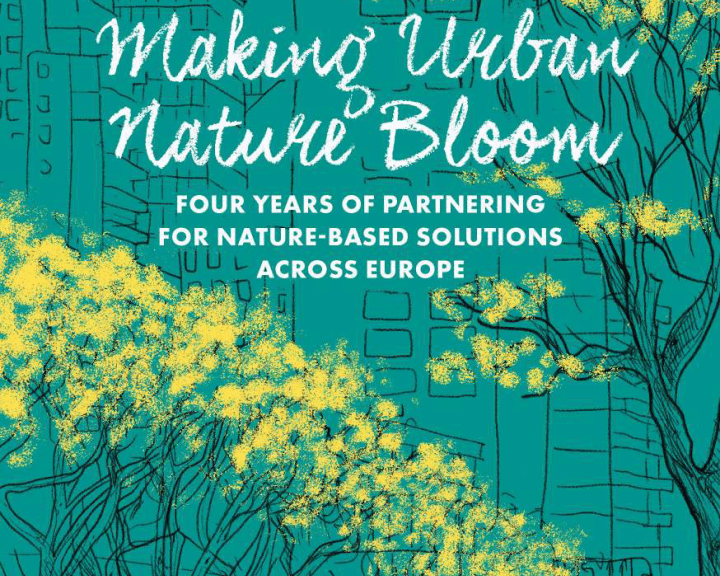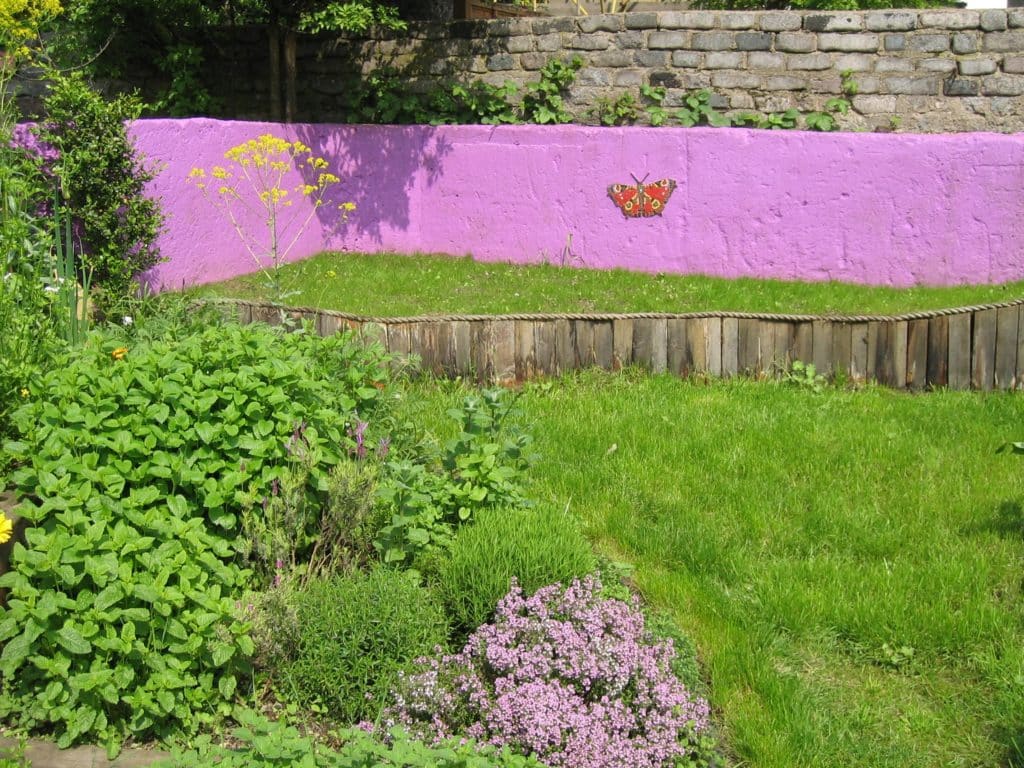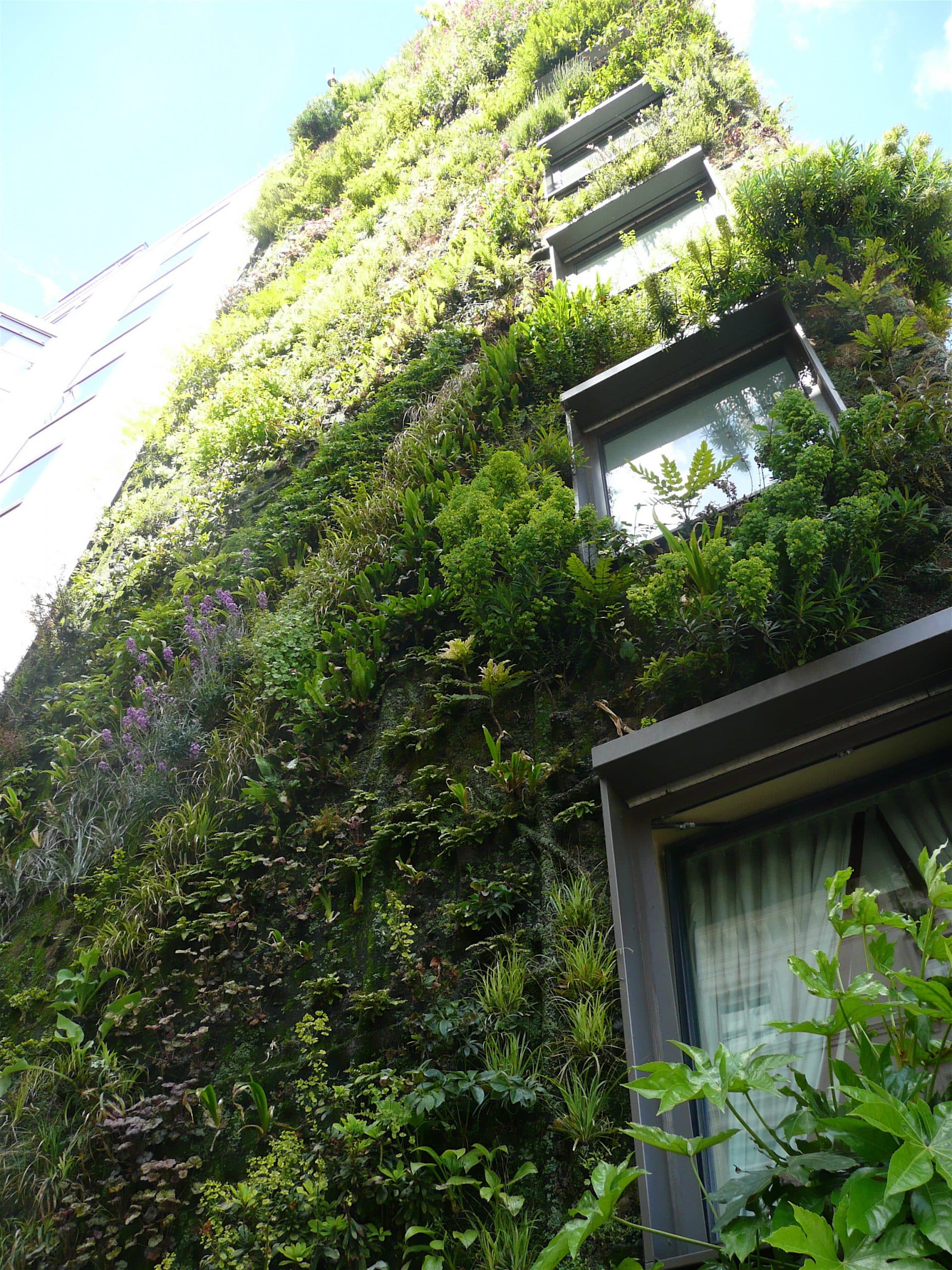
With the populations of cities growing all the time and the world facing unprecedented climate and biodiversity crises, urban nature has a critical role to play in supporting a sustainable planet. Nature-based solutions offer a tool for addressing the multiple environmental, social and economic challenges faced by cities that can also contribute to mitigating the environmental crises more widely. However, nature-based solutions are far from mainstream in city planning, so sharing knowledge of how to implement them effectively can help inspire their wider use. This book aims to share the knowledge gained from a partnership approach to implementing nature-based solutions in six cities across Europe.
Making Urban Nature Bloom is a short, 41 page, free to download book provides an overview of the NATURVATION (NATure-based URban innovation) project. NATURVATION was an EU funded project with the ambitious aim of better understanding what nature-based solutions can achieve in cities; how innovation in nature-based solutions can be promoted; as well as working with local communities and stakeholders to develop and share knowledge and tools to create nature-based solutions for urban sustainability. The project lasted four years, covered six countries, involved fourteen institutions and held nearly a hundred meetings with hundreds of stakeholders. ICLEI (Local Governments for Sustainability) Europe facilitated the project, which included teams from Barcelona, Győr, Leipzig, Malmö, Newcastle and Utrecht. In each team, an academic and a municipal partner were responsible for guiding the project and coordinating local stakeholders.
The book starts with an overview of each partner city and the nature-based solution the city focused on for the project. It then goes on to provide a brief summary of the key lessons learned, before finishing with a comprehensive appendix of resources.
This is a very beautiful book with excellent graphics. A lot of thought has clearly gone into how to communicate the project to a wide audience and the format is far more accessible than the traditional reports produced by academic projects. The portrait sketches and quotes in speech bubbles bring the personalities, expertise and commitment of project participants to life. The book provides an attractive overview, and is effective at representing the voices of the academic and municipal partners engaged in the project, giving a face to the challenges they met in implementing effective nature-based solutions.

The challenge for Making Urban Nature Bloom is its audience, as it seems to fall into a gap between introductory and expert. For example, for people who have knowledge of nature-based solutions (whether theoretical or practical) it is likely that they are already aware of the report’s conclusions: that the involvement of local communities is vital for their success and sustainability; that it is difficult to engage diverse stakeholder groups; that in order to engage local government agencies it is important to align projects with municipal aims; and that ‘there’s no one-size fits all’. While for someone who has no knowledge of the topic the book does not provide a strong case for the co-benefits of nature-based solutions as an alternative to traditional grey infrastructure solutions e.g. green spaces instead of storm drains for flood management. At a time when cash strapped local authorities are looking for cost effective ways to address the complex environmental, social and economic challenges that occur in urban environments, not highlighting the co-benefits nature-based solutions offer seems a lost opportunity to promote one of their greatest strengths.

More examples of problem solving, such as the use of bicycle tours of green areas that the Utrecht project used to engage a wider range of stakeholders, would increase the value of this book as a standalone resource for people interested in implementing nature-based solutions. A stronger voice for local communities and their views on how the projects affected them would have been a powerful inspiration. It would also have highlighted one of the key strengths of this project, which was the extensive engagement with community groups, something that is particularly important considering the growing concern around the potential for nature-based solutions to increase environmental injustices when the needs of local residents are not fully considered.
However, these minor issues do not detract from a book that is a highly accessible overview of a very valuable project. The book acts as an effective introduction to the project and an entry point to the project website, which makes an incredible wealth of resources available and is recommended to anyone interested in the potential of nature-based solutions in urban areas.
Monitoring the impact of nature-based solutions and positioning them as part of the wider urban green infrastructure are areas where local environmental record centres such as GiGL can provide vital support and resources. For example, GiGL’s Open Space data can enable projects to identify potential sites for the development of nature-based solutions. Habitat data can identify wetland areas suitable for nature-based water management solutions and our species data can help monitor changes in biodiversity. GiGL’s maps of Areas of Deficiency in access to Nature and Public Open Space can help to target areas where changes will have the most impact. GiGL’s new AoD model also enables predictive modelling so that, not only is it now possible to assess the impact of changes in green space and their access points but GiGL can map AoD for any subset of spaces we have data for, for example AoD in access to playing fields. Last, but definitely not least, our data search report service provides developers with comprehensive biodiversity and open space information for specific areas of London.
All in all, Making Urban Nature Bloom is a beautiful book that shows how much effort the project team put into translating concepts for a wider audience. The book provides an example of how to make information from an academic project more accessible. It is a quick and visually enjoyable read for anyone who is interested in an overview of issues associated with the implementation of nature-based in European cities. However, the value of the project is really realised by digging deeper into the wealth of resources linked in the book’s appendix and the project website.
